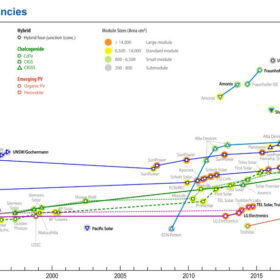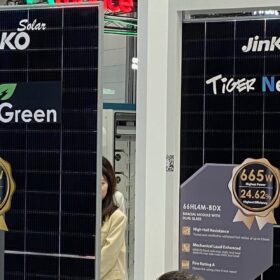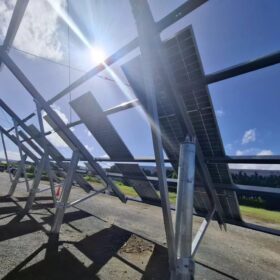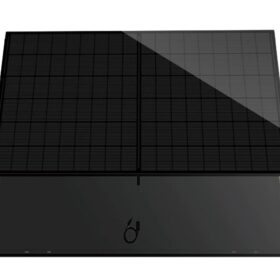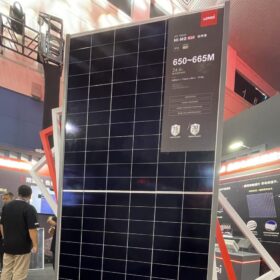Trina Solar claims 25.9% efficiency for large-area industrial TOPCon solar cells
The Chinese manufacturer said the result was confirmed by Germany’s Institute for Solar Energy Research in Hamelin.
Longi Green Energy sets world record for solar module efficiency at 25.4%
China’s Longi Green Energy has set a new world record for crystalline silicon solar module efficiency with its independently developed hybrid passivated back contact (HPBC) 2.0 module, achieving a conversion efficiency of 25.4%, according to a certification report from Germany’s Fraunhofer Institute for Solar Energy Systems (Fraunhofer ISE).
JinkoSolar announces new TOPCon solar modules with efficiency of 24.8%
Chinese manufacturer JinkoSolar has used the All Energy Australia 2024 exhibition and conference being staged in Melbourne to launch its next generation Tiger Neo 3.0 modules that are available in two series with power outputs of 495 W and 670 W.
JinkoSolar, Trina say TOPCon modules outperform p-type back-contact panels
JinkoSolar and Trina Solar have separately reported that on-field testing shows tunnel oxide passivated contact (TOPCon) solar modules outperform p-type back-contact PV modules in monthly power generation.
Gstar introduces 440 W TOPCon solar module with framless design
The Singapore-based manufacturer said its new panel can achieve self-cleaning through rainwater thanks to its frameless design. The new product features an operating temperature coefficient of -0.30% per C and an efficiency ranging from 21.51% to 22.53%.
SunDrive teams with Trina on solar tech development
Solar cell technology innovator SunDrive Solar will join forces with Chinese PV manufacturing giant Trinasolar to develop “cutting-edge” manufacturing facilities and bring Australian-made solar panels to market at scale.
Longi introduces 665 W HPBC photovoltaic modules
The Chinese PV manufacturer said its new module series has a power conversion efficiency of up to 24.8% and temperature coefficient is -0.26% per C.
Sinovoltaics tracks 78.8 GW solar module capacity in Southeast Asia
The latest supply chain map from Sinovoltaics tracks growth across Southeast Asia, with module capacity reaching 78.8 GW, and 58 production projects tracked.
Building-integrated PV system integrates PCM on sides
Scientists have designed a new building-integrated PV system that uses 30 mm of phase change material on each side of the wall. The array reportedly achieved superior thermoelectric coupling performance compared to reference BIPV systems without PCM.
New research shows vulnerability of TOPCon solar cells to contact corrosion
Researchers at the University of New South Wales claim to have identified new TOPCon contact degradation mechanisms that are significantly influenced by the combination of ions and aluminum-silver paste compositions. The primary degradation mechanism was a significant increase in series resistance.

